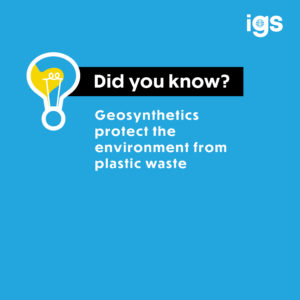
An estimated 239 million metric tons of mismanaged plastic waste will enter the environment every year by 2040. Mismanaged plastic waste can be defined as waste sent to landfill, littered, openly burned, or leaked into ecosystems. Once lost, this waste may release toxic chemicals and break down into potentially harmful microplastics.

Geosynthetics allow for the safe disposal of plastic waste, while saving carbon emissions, for example when used in landfills. Here, geosynthetics are used to contain plastic waste and prevent leakage of microplastics and toxic substances, thereby also protecting groundwater.
Furthermore, estimates show that landfill disposal results in lower greenhouse gas emissions of plastic waste by 42% compared with open burn; 28% compared with incineration and 23% compared with compostables.

**
Geosynthetic solutions should be fully investigated on every infrastructure project to ensure they meet the needs of the present without compromising the ability of future generations to meet their own needs.
Find out more about how geosynthetics are making a difference by downloading the IGS Sustainability eBook here or visiting our Sustainability page.





















